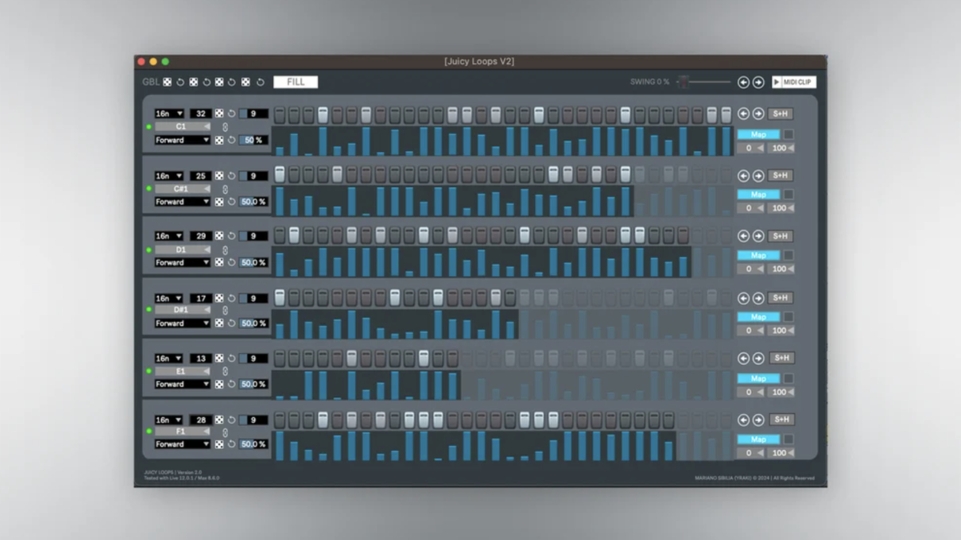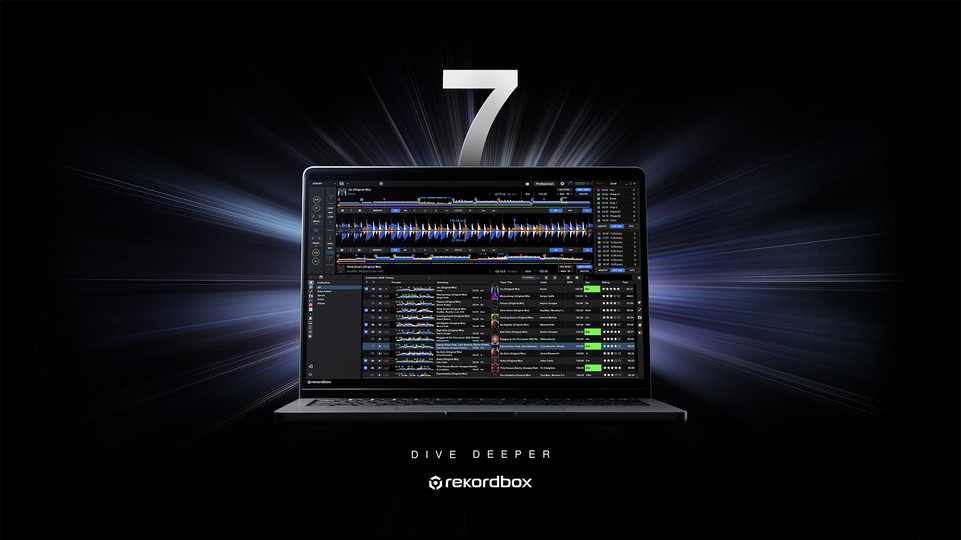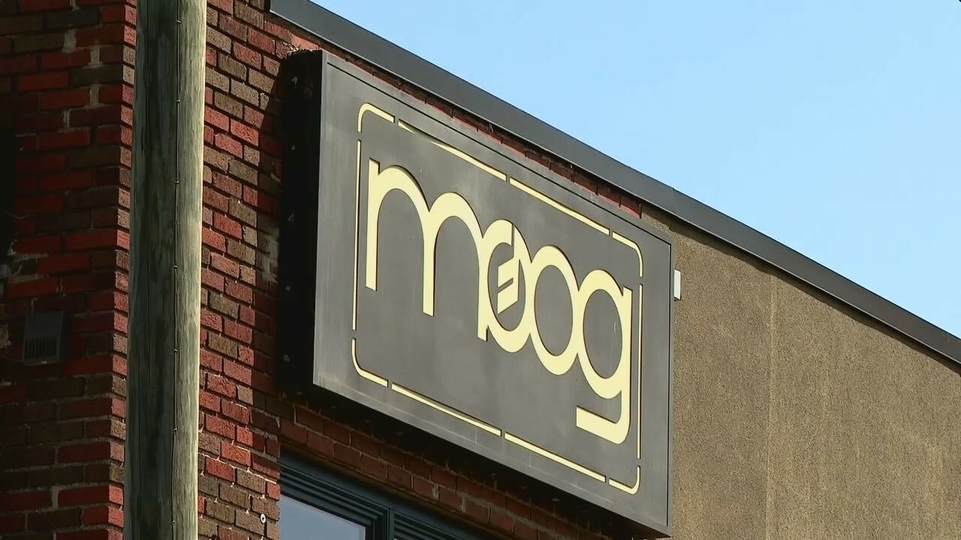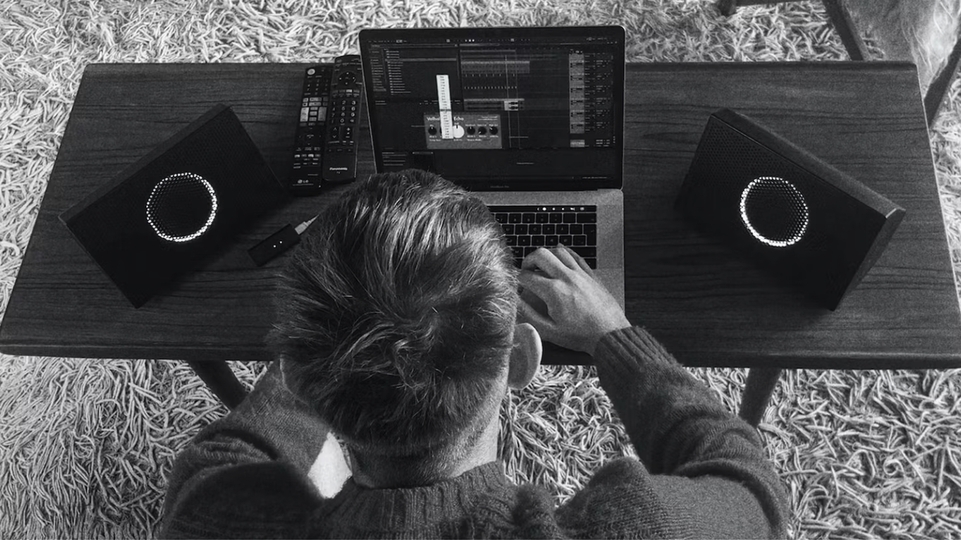
How FL Studio changed electronic music forever
How an adult version of Tetris kickstarted multiple musical revolutions
How much credit can you give a tool for creating art? Surely it's like praising the paintbrush for a great painting, or the typewriter for a best-selling novel. And to an extent, that's the case with the humble DAW – after all, the idea at least is that they're just a series of tools to turn ideas into creations, as seamlessly as possible. But for FruityLoops, later FL Studio, it found itself at the core of the conversation across the development of multiple genres and styles all across the world. Genres and sounds that went on to define and shape electronic music – and pop culture – more than once. This is the story of FL's unique beginnings, why it continually found itself at the crossroads of sonic innovations and why community has come to define “the most influential beat program since the MPC”.
In Their Own Image
In 1995, two Belgian programmers called Jean-Marie Cannie and Frank Van Biesen left their jobs at Pavell Software, creating computer programs tracking the stock market, to try their hand at videogames. Spotting a niche in the market, their first was called Porntris – an adult version of Tetris – that was sold on floppy disks via classified ads in the back of Computer Magazine. “Surprisingly enough, this caught on and people asked for more,” Jean-Marie Cannie told the anti-piracy lobby group IMSTA in 2008. “We decided to do a CD-ROM and got [into] bed with Private, one of the bigger players in the adult games market.” The result was a series of interactive, 18-plus, games that led them to enter the ‘Da Vinci’ contest, a global competition hosted by IBM, aimed at finding the next big coders and software developers.
Cannie and Van Biesen’s new company Image-Line re-coded one of their Private games to make it less ‘private’, mailed it in and won first prize in the ‘Multimedia’ category. But something else caught their wandering eye at the ‘Da Vinci’ contest — a 19-year-old developer who quietly scooped up both the ‘Game’ and ‘Overall’ prizes. The duo immediately approached Didier ‘Gol’ Dambrin to convince him to work for them. “Didier was home at the time with benefits and was not exactly looking for a job,” Cannie told Vice Belgium in 2017. It wasn’t until Cannie offered to buy him a new computer that Dambrin took the bait and joined the small, dynamic company.
The Birth of Fruity Loops
Gol’s first game for Image-Line was a gory shoot-em-up called Private Investigator. In it, you play as Dick Slammer, investigating a case of adultery on behalf of a client. The game was so fun rapper Ice-T reportedly yelled ‘This game beats cocaine!’ at a convention in Las Vegas in 1996. It was unchartered territory for video games as home computers grew in CPU and the new company was up for trying anything.
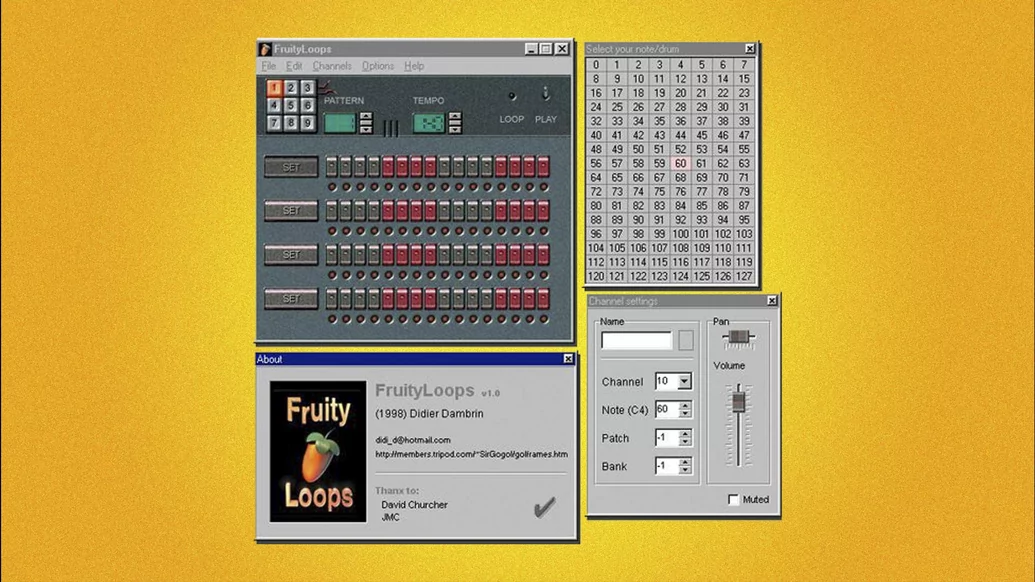

It was an approach that meant that 17 years later, Dambrin would leave Image-Line and leave behind a software that had gone on to play a role in the creation of grime and gqom, change hip-hop, influence dubstep and help launch the careers of EDM’s biggest superstars.“Our strategy was simple,” says Scott Fisher, COO of Image-Line. “We were hunting around making products to solve the problems of the era, with our toes in the business and entertainment software markets. Just trying to make a buck.”
As well as creating rapper-favourite shoot-em-ups, Dambrin was experimenting with audio apps in his spare time, inspired by a sequencing program called ‘ReBirth 338’, which later grew into Propellerheads’ Reason, and a drum machine called Hammerhead. “I wanted to merge the coolness of both in a drum machine that wouldn't have their main limitation,” Dambrin told Sonikmatter in a rare interview in 2003. “That is a single row of 'steps' shared between all the drums.” Dambrin wanted to make something more visual, where all steps were visible at the same time. “The first FruityLoops was named 'FrootyLoops'. The splash screen already featured a fruit, with a worm in it, and then I was told that the worm looked like a penis – although it had eyes, go figure – and so the worm was removed!”
As his new concept expanded, Image-Line allowed Dambrin to continue to develop the software in-house, for them. FruityLoops was born.
“It was an overnight success, not for income, but visibility and popularity,” says Fisher. “The simplicity and speed with which users could make something that sounded like music [was a big part of its early success]. Specifically, a beat and bassline. The Step Sequencer workflow is all about instant gratification.” So successful was the original launch of FruityLoops that every server they uploaded it on went down almost immediately due to demand. “One crashed hosting server after another proved the market validity of our new product,” says Image-Line CTO Jean-Marie Cannie, “which was promoted using an effective shareware tactic: instead of the usual time limit, the trial version allowed users to save the entirety of their creative outbursts, which was a pretty novel feature at the time.”
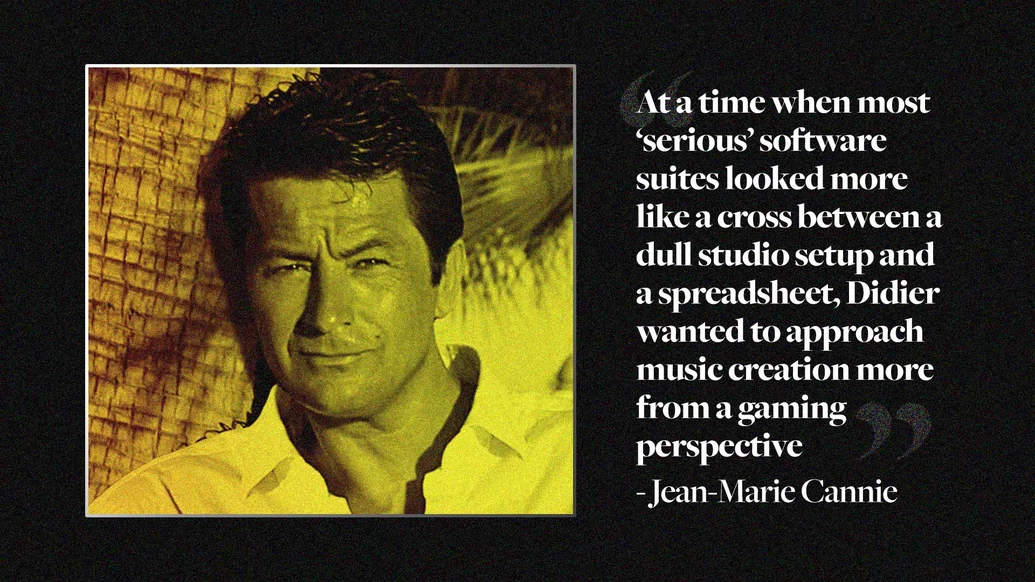

Another one of the biggest reasons FruityLoops caught on so quickly was that it was never aimed at musicians. In fact, neither Dambrin or any of the Image-Line team had any previous musical experience. “At a time when most ‘serious’ software suites looked more like a cross between a dull studio setup and a spreadsheet,” Cannie told Word Magazine in 2018, “Didier wanted to approach music creation more from a gaming perspective, resulting in FruityLoops featuring an attractive and colourful interface that immediately worked out of the box.”
Dambrin shared Cannie’s contempt for more traditional music-making software, calling Sonar, Logic and Cubase “classics. You know, like books, that you wished you had read, but don't want to read. They're the ones that are supposed be used but are too scary because of their complexity, and you don't really 'want' to learn them... they're probably the best tools for what they're supposed to do, but they're certainly not applications you can use for fun or have fun whilst using.”
The focus on gamification of music making opened the product up to a much wider market – not having to rely on the terminology and expectations of traditional producers and engineers gave Image-Line the upper hand when it came to recruiting new, curious creatives who’d never considered making music before. “It’s the same today, we watch users with zero musical experience, break out into a smile when they lay down a 4x4 kick with a snare on the fifth and ninth beats,” says Fisher. “All of a sudden, they are having fun and making music."
While the early internet was an exciting place to launch a music product, especially as PCs became powerful enough to process real-time audio, the lawless nature of the World Wide Web in the mid-to-late ’90s meant that generating revenue from downloads was next to impossible.
“We were making hardly any income from FruityLoops. People were happy to download or steal and use it, just not pay for it,” Fisher explained. “At the same time, its popularity meant we could not afford to host the downloads and had to rely on contacts and friends to host it on their servers. In those days, the bandwidth to host something like we had was the cost of a decent computer, every month, and we were making a fraction of that. We were just fortunate to have income streams from our other projects. If it weren’t for those, FL Studio probably wouldn’t have made it past the first version.”
FruityLoops’ ease of use, and its colourful, rounded interface may have made it easy for newbies to grasp the music-making process, but it led to the pro audio world laughing off its more childish approach. It wasn’t until hip-hop producer 9th Wonder made 2003’s Little Brother album ‘The Listening’, and Jay-Z’s ‘Threat’ from ‘The Black Album’ entirely on FruityLoops that the wider industry took notice. 9th Wonder told XLR8R in 2018, “I didn’t choose FruityLoops to sample, that’s the only choice I had. But the fact that it’s a $50 program that you download off Kazaa and I won a Grammys off of it fucks with some people, man.”
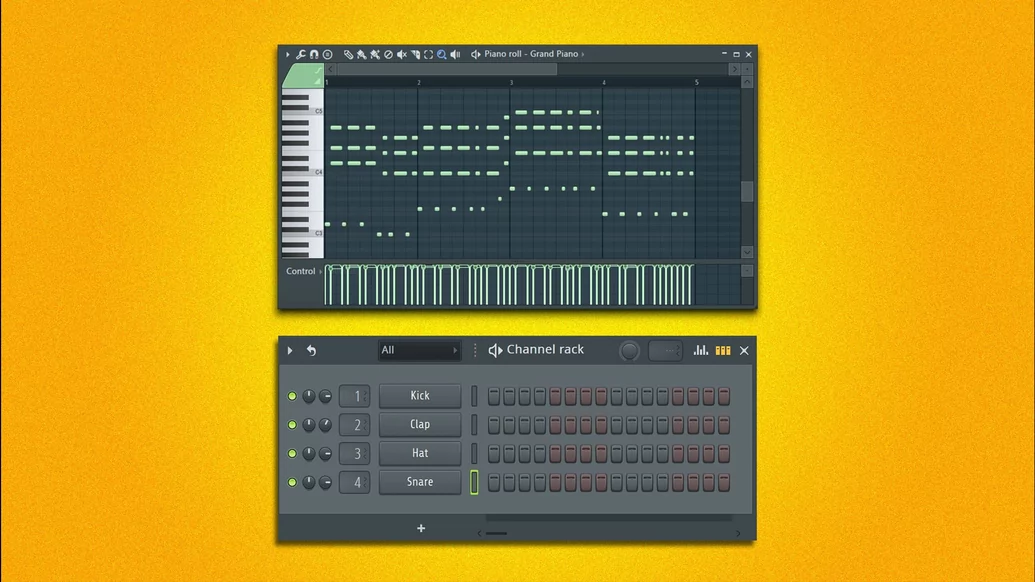

It would be wildly simplifying the story to say it was solely FL’s ease-of-use or colourful interface that made it appealing to users. Its speed of development and adoption of the newest technology, as well as adding initiative new tools, was also a huge part of the charm. VST and DirectX support were both added by the end of the ’90s while the firm favourite BeatSlicer joined the program by the early 2000s.
From Fruity to FL
As version 4 approached, Image-Line faced an unexpected lawsuit. As they attempted to trademark FruityLoops in North America, an objection came in from everyone’s favourite breakfast cereal giant Kellogg’s. “We had a pretty good legal case,” says Fisher. “One – they were not the same wordmark and two – no-one was going to mistake breakfast cereal with a music application. Wordmarks are restricted to industries. However, Kellogg submitted evidence they had previously released software CDs and games in their cereal boxes, so they were already in the ‘software industry’. So, rather than waste time and resources fighting an expensive, non-productive battle with a company 10,000x our size, we opted to change the name to ‘FL Studio’.”
Surprisingly, the ‘FL’ in FL Studio, doesn’t actually stand for Fruity Loops. “It was never meant to be silently read as ‘Fruity Loops Studio’. The only reason Didier [Drambin] went for it, was he thought it was going to be called Eiffel Studio, since ‘FL’ sounded like Eiffel to him, as in the Eiffel Tower.”
The reference to the iconic Parisian landmark may have gone over most people’s heads, but the software soon made its way into most people’s ears. In 2009, Soulja Boy released ‘Crank That’, a stripped-back, steel-drum led rap track with its own highly-imitated and widely-meme'd dance moves. The track was a global smash and Soulja Boy himself admitted even though he earned $10 million from the record, it took only 10 minutes to make. Created using only preset sounds from the demo version of FL Studio, its triplet hats inspired a new direction for rap music that continues into 2020.
Another aspect of ‘Crank That’ that became ultra familiar not just in hip hop and trap, but in another emerging genre was the bpm. While Ableton Live and Logic Pro’s default bpm is 120, FL Studio originally opted for a rapid 140bpm, something that immediately resulted in a different approach to four-four nature of other genres. “Grime’s instantly recognisable ‘magic number’ of 140bpm finds its origins here too,” said PSNEurope in 2018. “‘Godfather of Grime’ Wiley has said this standard tempo in the programme meant he created most of his earliest tracks at 140bpm, and as one of the genre’s first success stories, other producers followed his lead.” Early grime pioneer Dexplicit agrees. “I got so accustomed to the default tempo that everything I made in my earlier days was 140bpm. Whether it was garage, grime or bassline, it was almost exclusively at that tempo for this reason.”
FL was quickly becoming the go-to for emerging grime artists, with producer Darq E Freaker telling Red Bull Music Academy “everyone had FruityLoops on their computers at home and making tunes was more like a game.” Artists like Hudson Mohawke and Skream started on the PlayStation before graduating to the more advanced software. “I got introduced to making music on PlayStation, which got boring pretty quick,” Skream told RBMA in 2006. “I moved on to FruityLoops, which I still use now.” So much was FL Studio’s influence on the early days of the genre that in 2014 Skepta said, “As long as there are 12-year-old kids turning on their mum’s PC with a cracked version of FruityLoops making their own DIY sound, there’s grime.”
But FL’s influence as the catalyst of new sounds and genres didn’t end there. A chance meeting between Skream, Benga and Plastician resulted in the launch of another new sonic direction. “Hanging with Skream and Benga in particular, they put me onto using the TS404 in FruityLoops to create these weird, warping wobbly bass lines,” Plastician told PSN. “When they showed me how to use that I began bringing it into some of my tracks. That TS404 bass sound became the most iconic dubstep bass sound from around 2002 to 2005.”
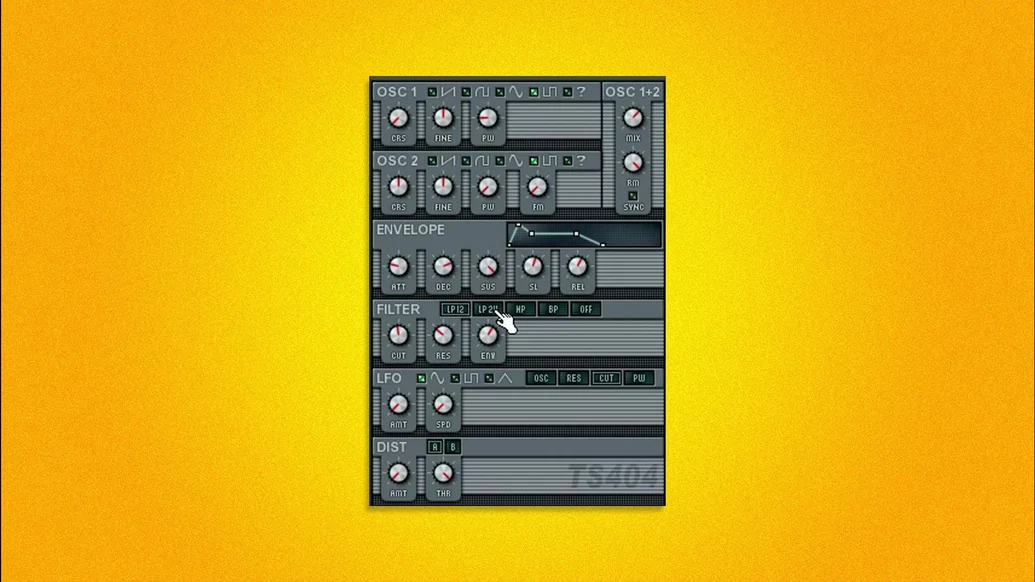

The sharing of knowledge, tricks, techniques — and software — became a huge part of how FL’s scattered user base became a thriving community. Largely shunned by ‘pro’ users, FL’s group of outcasts began to experiment, unphased by traditional music-making techniques and instead, using their ears and following their instinct.
“Many of us back then didn't have access to big studios,” grime producer Dexplicit told us. “FL allowed us to make music on any PC we had in the household. We didn't know about compression techniques etc. For instance, Lethal Bizzle ‘POW’ had no compression, EQ or anything. I just balanced the levels and exported it.” He continued: “Perhaps some of the more 'seasoned' producers at the time [snubbed] the program because they associated it with the wave of amateurs — us! — using it. Anyone that still holds this view of FL in 2020 obviously isn't aware of how many records in today’s charts have been built in it.”
Around the same time, on the other side of the world, another DIY sound was sowing its seed. A 13-year-old producer called Citizen Boy was given a copy of FL Studio by his uncle – he went on to become a founding member of the Mafia Boyz in Avoca Hills and a key player in Durban, South Africa’s latest sound: gqom. “I use Edison [FL Studio’s audio editing tool] almost every time I produce because I love to create samples,” he told us. “Especially the genre I’m producing, which is gqom, you need to have interesting samples – they need to sound cool, interesting and wild.” The outlandish, polyrhythmic, raw sound is another example of more traditional production methods cast aside in favour of expressing a feeling or emotion regardless of traditional music or production concepts, this time from the townships of Durban. Gqom producers used tools like WhatsApp, Facebook and KasiMP3 – SA’s answer to SoundCloud and Bandcamp – to distribute their music. Once again, community – and FL studio – was at the heart of its origin story.
Back in Europe, young producers were combing internet forums, looking for tips and techniques, sharing knowledge and requesting feedback on their tracks. This included a young Tim Bergling who, in 2007 posted his demos on a Swedish music-making website called Studio.se, quickly followed by ‘Anyone?’ when his request for feedback went unacknowledged. Avicii’s story doesn’t need to be told again, but his explosion as one of EDM’s key posterboys meant his 2012 In The Studio video with Future Music Magazine racked up 7.4 million views and gave FL Studio unparalleled free advertising. “The exploding EDM scene proved to be another big supporter of the software,” said Cannie, “with producers such as Martin Garrix and Avicii showing off their production through YouTube videos and basically providing incredible free PR for our programme along the way.”
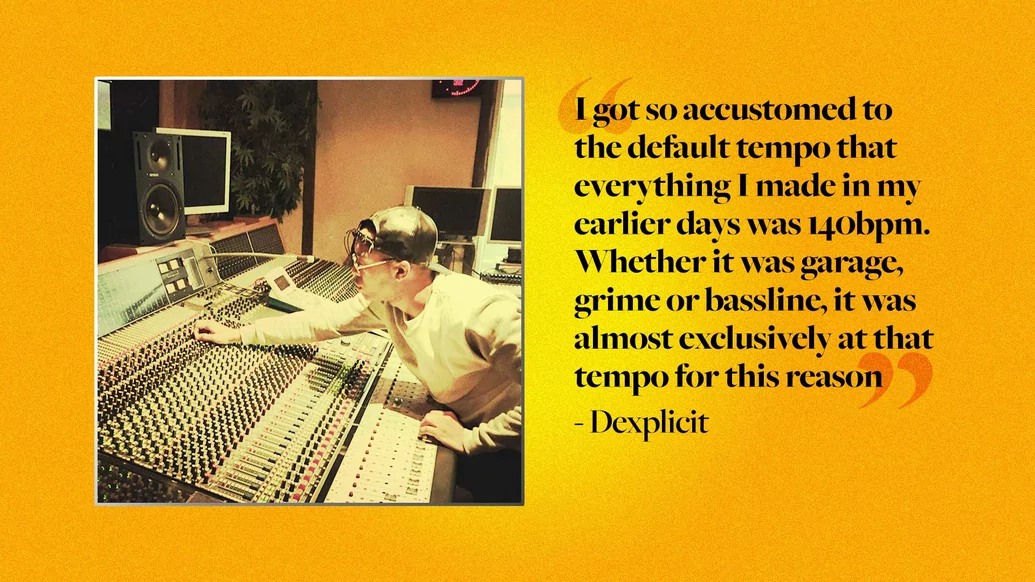

Garrix’s Future Music video racked up nearly nine million views, and with it fed the narrative that’s been part of FL’s story all along: community-driven growth. Be it a crew of experimental, early internet adopters, techniques, shared around early grime producers, family members sharing tips and software in Durban, or a new generation of forum-obsessed and YouTube-devoted online dance music fanatics. Other power users — and beta testers — include Deadmau5, Madeon and Porter Robinson.
Image-Line too had a hand to play in incubating that sense of community. Scott Fisher claims it’s the result of four core values: “Availability: customers can get in touch with staff and management easily on our forums or via our website. Generous: with lifetime free updates, free content, and adding meaningful features to the base or stock toolkit. Trustworthy: we care about data privacy, only soft sell our products, make truthful claims about products, accurate claims about audio benefits and act consistently in all this. Fun: we don’t take ourselves too seriously and try to reflect how happy the team is to be working on a product that is loved by so many people.”
The future for FL Studio
FL Studio’s role in shaping how electronic music has morphed over the last two decades isn’t hyperbole. It had a concrete part to play in the creation and incubation of some of the defining sounds of the 21st century. But what’s next for the Belgian company? Dambrin finally stepped back from the day-to-day operations of Image-Line and FL Studio in 2015. “From the age of 19 to 40, he was only involved with FL Studio,” said De Canine. “He had no girlfriend, no bicycle, no car, nothing. He recognised the urgency to make something of his life.” His next project? Designing a Lego set that he hopes makes its way into the official store.
Image-Line replaced Dambrin’s role with no less than 12 new developers, finally recruiting music-makers and those who are “more open to what customers want.” Fisher reiterated the landmark moment that was Dambrin’s departure. “We restructured, hired a bunch of new developers, and powered on... now was the time to make all the changes and add long-requested features customers had been asking for. This included things like Time Signature Changes and the first release on macOS in 2018.”
Reflecting on what the future holds for Image-Line and FL Studio, Fisher was more conceptual in his prophesying. “We will be doing exactly what we are doing now, listening to our customers and evolving FL Studio to meet their expectations and needs. All we need to do is make sure each version of FL Studio is better than the last, including the features musicians want. The rest should take care of itself.”

